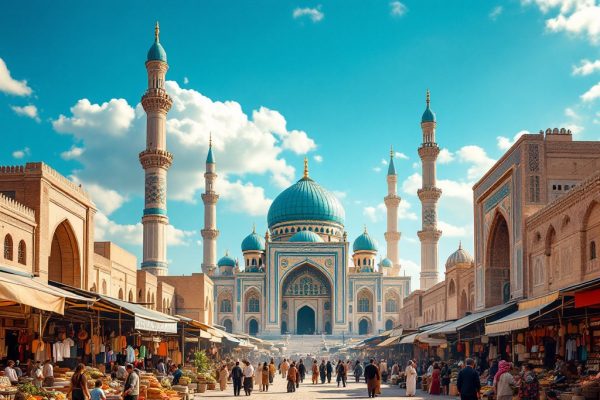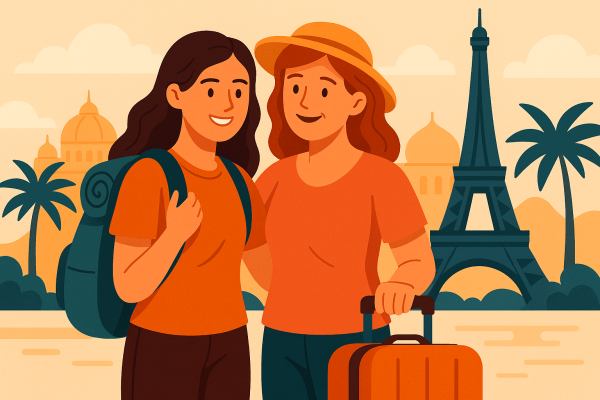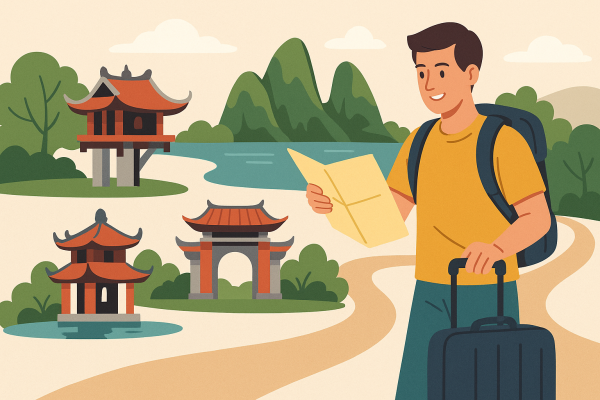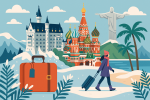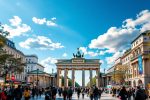Visiting the Brandenburg Gate in Berlin
Journey through time at Berlin’s iconic Brandenburg Gate, a symbol of resilience and unity. From its 18th-century origins to its role in the Cold War and German reunification, the Gate’s story is captivating. Explore its neoclassical architecture, crowned by the majestic Quadriga. Discover nearby attractions, events, and practical tips for your visit. Experience the Brandenburg Gate’s powerful history firsthand.
Important information
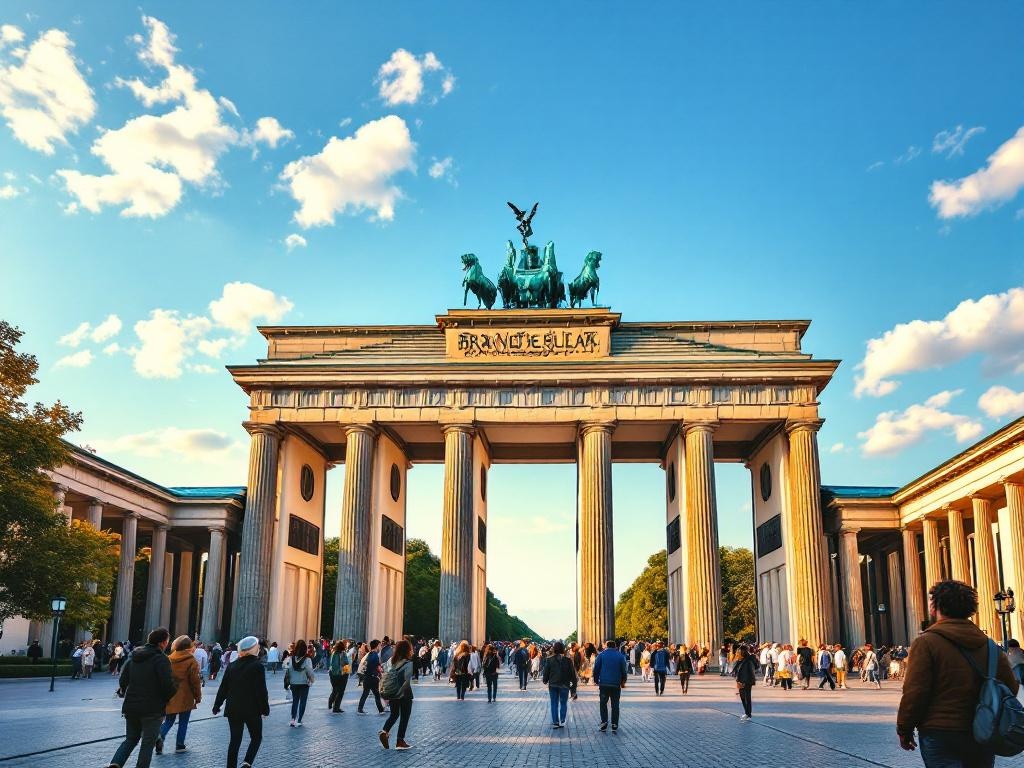
- Built between 1788 and 1791, the Brandenburg Gate is a neoclassical monument in Berlin, originally a city entrance.
- The gate became a symbol of division during the Cold War, situated next to the Berlin Wall in East Berlin.
- After the fall of the Berlin Wall in 1989, it transformed into a symbol of German reunification and peace.
- The Quadriga, a statue of the goddess Victoria on a chariot, sits atop the gate, symbolizing victory and peace.
- The gate is free to visit and easily accessible by public transport. It’s a central location for events like Berlin’s New Year’s Eve celebration.
Historical Significance of the Brandenburg Gate
The Brandenburg Gate in Berlin, a neoclassical triumphal arch, stands as a powerful symbol of German reunification. Commissioned by King Frederick William II of Prussia, its construction spanned from 1788 to 1791. Originally serving as a city entrance, the gate embodies Berlin’s rich history.During the Cold War, the gate’s location near the Berlin Wall transformed it into a symbol of division. Situated in East Berlin, the gate’s restricted access for West Berliners and West Germans served as a stark reminder of a divided nation. The fall of the Berlin Wall in 1989 dramatically shifted the gate’s symbolism to one of unity and peace.With Germany’s formal reunification on October 3, 1990, the Brandenburg Gate became an emblem of this newfound unity. Celebrations at the gate marked the end of the Cold War’s division. Today, the Brandenburg Gate stands as a testament to Germany’s resilience and its continued pursuit of peace.
When Was the Brandenburg Gate Constructed?
Berlin’s Brandenburg Gate was erected between 1788 and 1791, a remarkably rapid construction project for its time.
What is the Brandenburg Gate’s Role in German History?
The Brandenburg Gate stands as a potent symbol of German reunification, marking the end of the Cold War’s division. Originally built as a simple city gate in the late 18th century, its role dramatically evolved over time. During the Cold War, it served as a stark reminder of a divided nation. However, with the fall of the Berlin Wall in 1989, the gate transformed into a powerful emblem of unity and peace, solidifying its true historical significance.
Why is the Brandenburg Gate a Symbol of Reunification?
During the Cold War, the Brandenburg Gate stood in East Berlin, near the Berlin Wall. With the Wall’s fall in 1989, the Gate became a potent symbol of German reunification, marking the end of a divided nation and the reunion of East and West.
Architecture and Design of the Brandenburg Gate
The Brandenburg Gate in Berlin, a majestic neoclassical monument, was designed by Carl Gotthard Langhans and built between 1788 and 1791. Constructed from sandstone, its twelve Doric columns form five passageways. The gate is crowned by the iconic Quadriga, a bronze statue of Victoria, the Roman goddess of victory, driving a four-horse chariot. The gate’s design draws inspiration from the Propylaea, the entrance to the Athenian Acropolis.
Design and Symbolism
The gate exemplifies neoclassicism, an architectural style emphasizing symmetry, simple geometric forms, and classical elements like columns and friezes. Its unadorned Doric columns contribute to a sense of elegant simplicity. This style reflects the late 18th-century revival of interest in ancient Greek and Roman art and architecture.
The Quadriga
Johann Gottfried Schadow’s Quadriga depicts a chariot drawn by four horses, guided by Victoria. Symbolizing victory and peace, the statue initially featured a peace goddess but later became associated with Victoria. Its history of capture and retrieval mirrors Berlin’s dynamic political landscape.
The Brandenburg Gate stands approximately 26 meters (85 feet) tall, 65.5 meters (215 feet) wide, and 11 meters (36 feet) deep.
Understanding the Neoclassical Architecture
The Brandenburg Gate, built in the neoclassical style, reflects the order and civic virtue of 18th and 19th-century Europe. Its design, inspired by ancient Greece and Rome, features prominent Doric columns, a horizontal entablature, and balanced proportions, all embodying the spirit of the age.
The Quadriga: What is the Statue on Top?
The Quadriga, a four-horse chariot, symbolizes victory and peace. This magnificent sculpture is perched atop the Brandenburg Gate.
How Tall is the Brandenburg Gate?
The Brandenburg Gate reaches a height of 26 meters.
Experience at the Brandenburg Gate
Visit the iconic Brandenburg Gate in Berlin, a landmark steeped in history and completely free to explore. Capture breathtaking photos and immerse yourself in the lively ambiance of Pariser Platz. Informative plaques provide insights into the square’s rich past, while concerts and cultural festivals frequently animate the space.
Nearby Attractions
- Reichstag Building, a short walk from the Brandenburg Gate.
- Berlin Wall Memorial, a poignant reminder of the city’s divided past.
- Tiergarten Park, a sprawling green oasis perfect for leisurely strolls.
- Holocaust Memorial, a powerful tribute to the victims of the Holocaust.
Enhance Your Visit
For a deeper understanding of the Brandenburg Gate’s history, architecture, and cultural impact, consider a guided tour. The gate is easily accessible by U-Bahn, S-Bahn, or bus, and many other central attractions are within walking distance.
Is the Brandenburg Gate Free to Visit?
Visiting the Brandenburg Gate is free. This public landmark is open and accessible to all, with no ticket required.
What Can You Do at the Brandenburg Gate?
Capture stunning photos at the Brandenburg Gate and explore the historic Pariser Platz, where informative plaques provide rich historical details. This vibrant hub buzzes with activity, from concerts to festivals, immersing you in culture and history.
Tips for the Best Photos at Brandenburg Gate
Capture breathtaking photos of the Brandenburg Gate bathed in the golden hues of sunrise or sunset. Experiment with various angles, shooting from the sides and incorporating the surrounding park for a unique perspective. A tripod will provide stability in low light, but visiting during off-peak times, like early morning or late evening, minimizes crowds and offers softer, more diffused lighting for cleaner shots. Here’s how to make the most of your photography session:
Golden Hour Magic: Capture the Brandenburg Gate during the golden hour (sunrise or sunset) for stunning, warm lighting.
Angle Exploration: Experiment with different angles. Shoot from the sides and include the surrounding park for unique perspectives.
Tripod Stability: Use a tripod for stability, especially in low light conditions.
Off-Peak Timing: Visit during off-peak times (early morning or late evening) to minimize crowds and enjoy softer lighting.
Events and Activities at Brandenburg Gate
The Brandenburg Gate is a central point for a wide array of events in Berlin, from concerts and festivals to political rallies and national celebrations like German Unity Day on October 3rd. Light shows and projections often illuminate the Gate during these special occasions.
Berlin’s New Year’s Eve Celebration
Berlin’s New Year’s Eve party is centered around the Brandenburg Gate. It features live music, a spectacular fireworks display, and a lively street party atmosphere with various food and drink stalls. This electric atmosphere draws massive crowds every year, creating a truly memorable experience.
Other Events at the Brandenburg Gate
Throughout the year, the Brandenburg Gate hosts numerous events such as:
- concerts,
- festivals,
- political rallies,
- national celebrations (like German Unity Day on October 3rd).
What Events are Hosted at Brandenburg Gate?
Berlin’s Brandenburg Gate is a central location for a variety of events. Throughout the year, it hosts cultural festivals, public gatherings, and major celebrations. You might see concerts, light shows, or political rallies, making it a true hub of activity.
New Year’s Eve Celebrations at Brandenburg Gate
Every year, thousands of people gather at the Brandenburg Gate for a massive New Year’s Eve celebration. Live music and vibrant fireworks create an electric atmosphere.
Accessibility and Visitor Information
The Brandenburg Gate is easily accessible by public transport. You can take the U-Bahn (lines U55 and U2) or the S-Bahn (lines S1, S2, or S25). Buses 100, 200, and TXL also stop nearby. The Brandenburg Gate is open to all visitors, free of charge. For tourist information, visit the nearby Tourist Information Office at Pariser Platz.
How to Get to Brandenburg Gate via Public Transport?
You can easily reach the Brandenburg Gate by public transport. Direct routes are available on the U-Bahn (subway) and S-Bahn (commuter train). The nearest stations are Brandenburger Tor and Potsdamer Platz. Many bus lines also serve the area.
Is the Brandenburg Gate Open to All?
The Brandenburg Gate welcomes visitors of all backgrounds and nationalities, free of charge.
Visitor Services and Information
Planning a visit to the Brandenburg Gate? Here’s what you need to know:
Information Points
Discover fascinating insights into the Brandenburg Gate’s rich history and impressive architecture, as well as details about the surrounding area.
Knowledgeable Staff & Volunteers
Get expert guidance from knowledgeable staff and volunteers who are available to help you make the most of your Brandenburg Gate experience.
Travel Tips for Visiting the Brandenburg Gate
Visiting the Brandenburg Gate in Berlin is free and open to the public. Located in the city center, it’s easily accessible by public transport, including the U-Bahn, S-Bahn, and bus. For the best photos, visit during daylight hours.
Nearby attractions
- Pariser Platz: Explore the adjacent Pariser Platz.
- Tiergarten Park: Relax in the tranquil Tiergarten Park.
Reichstag Building
Visit the Reichstag Building, choosing between guided tours for historical insights or self-exploration. Check local listings for events happening near the Brandenburg Gate during your visit.
Things to Know Before You Go
The Brandenburg Gate is easily accessible by public transport, placing you in the heart of a historically rich area. Explore nearby parks and museums, capturing stunning photos during daylight hours.
- Reichstag Building.
- Holocaust Memorial.
- Potsdamer Platz.
For a more tranquil experience, visit during off-peak times to avoid crowds. Bike rentals offer another convenient way to explore the area. Before you travel, make sure you have the necessary visa or permits. Check the latest entry requirements here.

